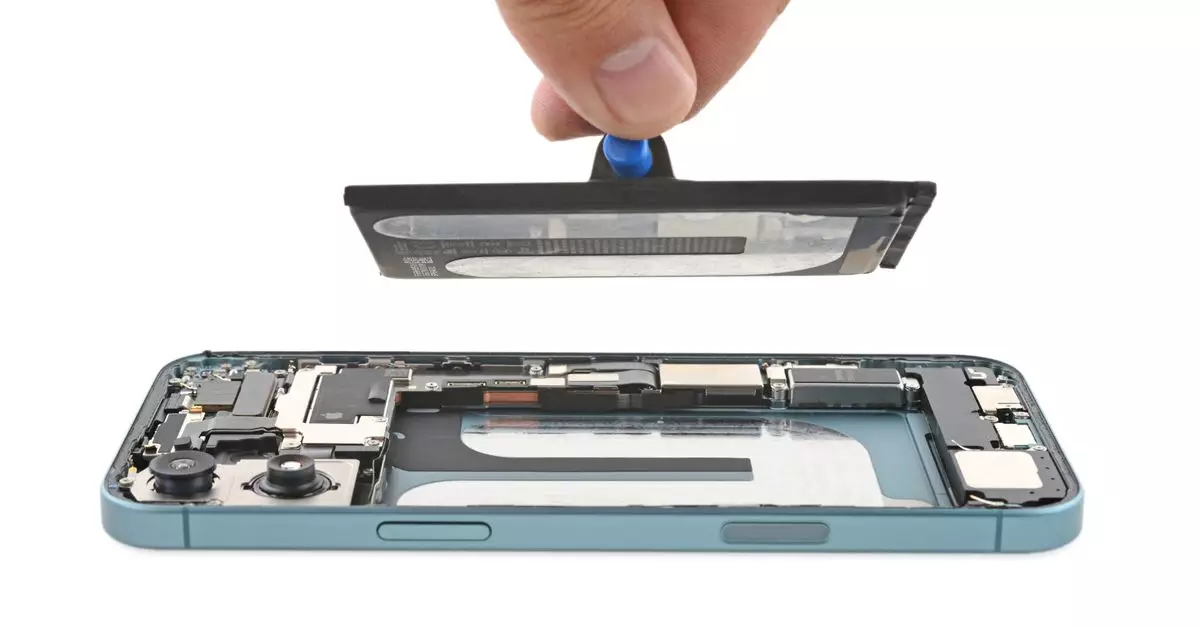The launch of the iPhone 16 lineup has sparked significant interest not just for its high-tech features, but also for its surprising approach to repairability. Recent disassembly efforts by iFixit, prompted by Apple’s release of comprehensive repair manuals, shed light on several noteworthy innovations that promise to reshape the user experience. This article delves into the implications of these advancements, exploring how they affect consumer repairability and the environmental footprint of mobile technology.
Apple’s commitment to making the iPhone 16 more user-friendly in terms of repairability is notable. Traditionally, smartphone repairs have posed challenges for consumers and technicians alike, often due to complex disassembly processes and the use of strong adhesives. However, this year’s model introduces electrically debondable adhesive—a significant evolution in the way consumers can handle battery replacements. This change was highlighted in reports from June, but the hands-on disassembly by iFixit provides practical insights into its real-world functionality.
During the disassembly process, iFixit revealed that the adhesive allows for relatively easy removal of the battery. Users or technicians can apply a simple electrical current from a standard power source to release the adhesive, enabling the battery to detach effortlessly. This newfound ease of repair stands in stark contrast to the often frustrating experiences associated with previous iPhone models, reinforcing Apple’s investigation into sustainable and more accessible product design.
In addition to the debondable adhesive, iFixit discovered other intriguing components during their examination of the iPhone 16. Among them is a new camera control button that features notable tactile feedback. This enhancement, paired with an advanced flex cable that likely measures force, indicates that Apple is increasingly concentrating on user interaction and experience, underscoring its focus on functional design.
Moreover, the thermal management of the A18 chip’s Neural Engine has also received attention. It appears equipped with a heat sink designed to efficiently dissipate heat during demanding AI workloads. The implications here are twofold: first, users can expect improved performance for AI-driven tasks, and second, the design hints at Apple’s intent to ensure longevity through better heat management.
The conversation surrounding repairability inevitably leads to considerations of sustainability in tech. By simplifying the repair process, Apple may encourage users to fix their devices rather than replace them. This move aligns with growing expectations among consumers for companies to act responsibly regarding e-waste. The potential to extend the lifespan of devices through accessible repair solutions could help mitigate the environmental impact of discarded electronics.
While it’s still early to fully gauge the long-term effects of these innovations, the introduction of the iPhone 16’s repairable features marks a positive step in the direction of user empowerment and environmental responsibility. As the industry evolves, other manufacturers may feel pressured to adopt similar strategies, sparking a broader shift towards more sustainable practices in the tech sector.
The disassembly insights from iFixit not only illuminate the technical advances inherent in the iPhone 16 but also signal a noteworthy trend towards a more repairable and sustainable future for smartphones. Through these initiatives, Apple seems to be paving the way for a new standard in the industry—one that values user experience and ecological mindfulness alike.

